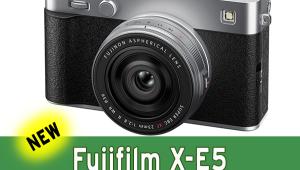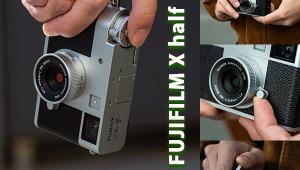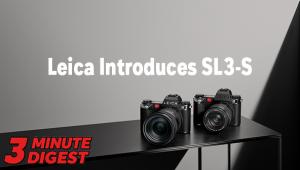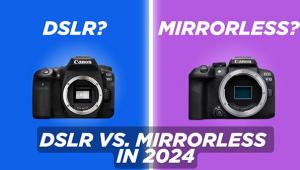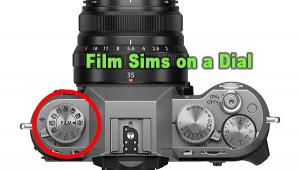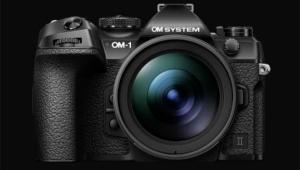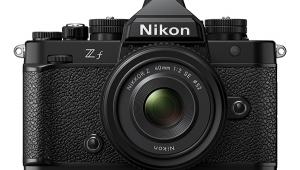Pentax Q Mirrorless Camera Review
Like a standard compact camera, the Pentax Q system uses a very small sensor system, 1x2.33”. It offers an interchangeable lens system with the new Q mount. Pentax offers three lenses: a standard zoom (5-15mm f/2.8-4.5, equivalent to 27.5-83mm), a fisheye lens (3.2mm f/5.6, equivalent to 17.5mm), and a third, with which we did our tests, a fixed focal length of 8.5mm, equivalent to 47mm. Pentax brands this lens as the “Standard PRIME 8.5mm f/1.9 AL [IF].” Pentax also offers two additional “Toy” lenses with a fixed aperture size: the Toy Lens Wide 6.3mm f/7.1 and the Toy Lens Tele 18mm f/8.




The camera is very compact and is in fact smaller than most standard compact cameras, yet the design is more akin to the compact camera class, not to SLRs (like the Panasonic GH2) or to classic 35mm film cameras (like the Olympus PEN series). It has a very small grip on the right-hand side and nearly no space for larger function setting controls. The mode dial and the setup dial on the top are very small. The interfaces are located on the bottom of the camera while the rechargeable battery is placed on the left-hand side of the body and the card slot is located on the right-hand side.
One special and very handy feature is located on the front side of the camera: the setup dial near the lens allows the user to switch between four custom-defined camera settings very fast and efficiently.
The camera has an internal anti-shake system (based on CMOS shift technology) which will work with every lens system attached to the Pentax Q. During our tests it worked well and allowed us to take images with longer shutter speed settings (two to three stops longer when compared to shooting without the stabilizer system activated).
The Pentax Q offers all standard exposure modes like P, S, A, and M (Aperture priority is called “Av” and Shutter Speed priority mode is called “Tv” on the mode dial). In addition, it offers 18 scene modes with standards such as Portrait and Landscape plus special modes like “HDR” (which shoots three images to generate one single image with higher dynamic range) or “Backlight Silhouette.”
The camera has an internal digital 2x ND filter system, which while less useful for motion blur shots in bright sunlight can be used to attain somewhat wider aperture settings to create a shallow depth of field for portrait shots. To further enhance portraits the camera offers an additional special scene mode, which is directly available on the mode dial on the top, dubbed “BC” (for “Blur Control”) that will create a soft focus in the background to enhance the shallow depth of field effect.
The camera is able to record Full HD video (1920x1080 pixels, 30 frames per second) and can shoot interval movies (fully configurable interval time between two frames and overall recording time).
The on-board flash system uses a small flash on a complex boom, which is very large and allows the user to lift the flash high above the optical axis to help avoid the redeye effect. In addition, the camera has an anti-redeye flash mode. The camera also offers a standard accessory shoe for external flash systems.
The Pentax Q doesn’t offer an optical viewfinder or EVF system. The LCD screen on the back is the sole viewfinder. The 3” monitor has a resolution of 460,000 RGB dots, which is on an average level for compact or CSC cameras, but doesn’t obtain the high quality or high resolution of some competitive LCDs (on Panasonic or Sony cameras, for example) or AMOLED systems like on Samsung’s new NX200.



Image Quality
Color: The automatic white balance system worked very well. Nevertheless, you will notice a slight cool touch in our test images, especially in the standard test box shot. You can see the same behavior in the shot of the GretagMacbeth test chart, because the neutral gray fields are shifted into the more bluish area. Overall, the color errors are on a low level and there is only a little oversaturation.
Sharpness: Resolution results are on an average level for compact cameras with 12MP sensors. The Pentax Q reproduced the ISO 12,233 chart with 2109 lines per picture height, which is a low result. Even with its intense USM filtering, which causes some double contours on contrast lines, the camera is considerably far from its nominal resolution of 3000 lines per picture height. This created a slightly little soft character in our two test shots in total, but some harsh differences in the hair structure in the portrait shot.
The differentiation of red colors is also a little soft. The red spool in the upper right of the test box shot shows nearly no difference between single threads on the red spool.
Noise: The luminance noise is on a very low level for a camera with a 1/2.33” sensor. However, color noise is clearly visible in an image taken with ISO 400 or higher. Color noise is filtered, but the noise artifacts are visible as color clouds/color smear and are quite annoying. Images taken with the highest speed setting of ISO 6400 are extremely smoothed by anti-noise filtering and it is not advisable to use that ISO setting for prints.
Scorecard
Pro
• Extremely compact and lightweight CSC camera
• Sophisticated/clever built-in flash system
Con
• Very small sensor compared to CSC cameras with MFT or APS-C sensor
• Missing optical viewfinder or EVF
Image Tech
Image Tech is where we publish web-exclusive lab reports on cameras. To read the reports please go to the Shutterbug homepage at www.shutterbug.com and click on the Image Tech tab on the top navigation bar. New reports are published frequently, so check Image Tech for updates. The following reports are available now:
• Canon 5D Mark III
• Canon EOS-1D X
• Leica X1
• Ricoh GR Digital IV
• Nikon P7100
• Olympus E-P3
• Panasonic FZ48
• Sigma SD1
Lab results and test images by BetterNet, our TIPA-affiliated testing lab. Edited by George Schaub.

